It is important to know about the methods of repairing the tyre punctures. These methods can help in ensuring the safety convenience of a vehicle a tyre puncture repair method is a convenient way to fix a rupture quickly especially when you are stuck in a remote location and do not have access to any professional service around you.
There are number of methods using which a person can repair a tyre puncture– plug and patch method, compound repair method, tube repair method, etc.
Detailed explanation of different types of tyre puncture repair methods
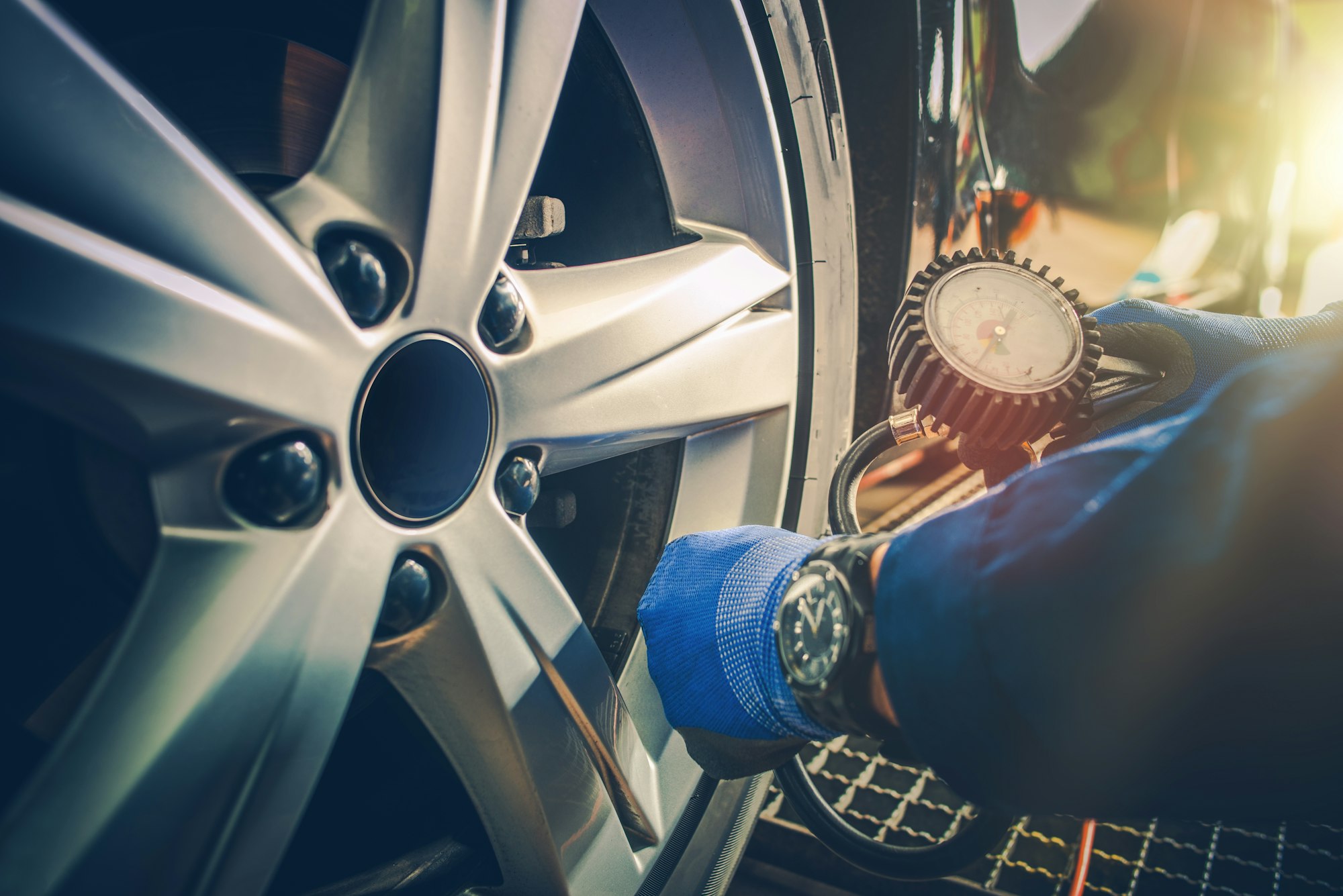
There are number of different methods using which one can repair the tyre. Each method has its own advantages and disadvantages following are the different types of tyre puncture repair methods.
- Patch repair: In this method, a patch is applied to the inside of the tyre to cover the puncture. This patch is usually made from a rubber material or a latex material which is designed to seal the punctures and prevent the air from leaking. Patch repairs are used for small punctures in the tread of the tyre and are considered as a permanent repair.
- Plug repair: A plug repair is a type of puncture repair method in which a plug is inserted into the tyre to seal it. The plug is made from rubber or latex material and is inserted into the puncture using a special tools. These types of repair are done in the sidewalls of the tyre. It is considered as a temporary solution, as plugs can get loose and a puncture can occur again.
- Combination repair: It is a combination of patch and plug repair where a patch is applied to the inside of the tyre and a plug is attached from the outside of the tyre to seal the puncture. This method is quite affective and more permanent than the plug repair method.
- Tyre replacement: If the state of the tyre becomes irrepable with large punctures and irreversible damages. It is better to replace it because no amount of patches or plugs can ensure the working of the tyre in the future; it can also cause a threat to the vehicle and the driver.
Advantages and disadvantages of tyre puncture repair methods
Patch repair:
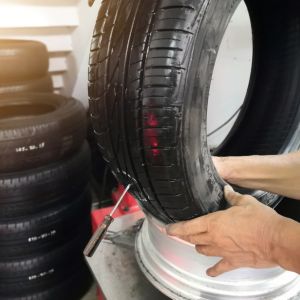
Advantages:
- Permanent repair: Once a patch is applied, the puncture will be sealed and the tyre will be able to maintain its pressure.
- Cost-effective: Applying a patch is much cheaper than replacing the tyres.
- Easy to perform: Patch repairs can be done quickly and easily, and do not require specialized equipment or training.
Disadvantages:
- Limited to tread punctures: Patch repairs can only be used on punctures in the tread of the tyre, and not on punctures in the sidewall or shoulder.
- May weaken the tyre: Applying a patch to a tyre can weaken it, reducing its overall strength and lifespan.
Plug repair:
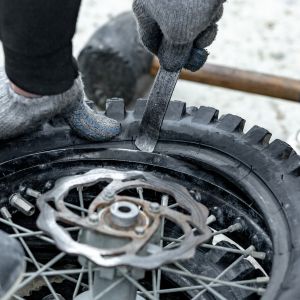
Advantages:
- Quick and easy: Plug repairs can be performed quickly and easily, making them a convenient option in an emergency.
- Can be used on sidewall punctures: Plug repairs can be used on punctures in the sidewall or shoulder of the tyre, which cannot be repaired by patching.
Disadvantages:
- Temporary solution: Plug repairs are a temporary solution and may come loose over time, requiring further repairs.
- Can damage the tyre: If not done correctly, plug repairs can cause further damage to the tyre, reducing its overall strength and lifespan.
Combination repair:
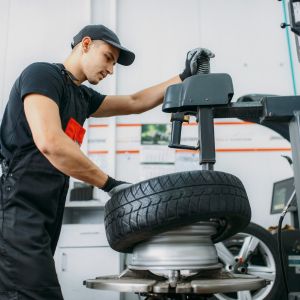
Advantages:
- More effective than a plug repair alone: Combination repair is a more effective solution than a plug repair alone.
- Permanent repair: A combination repair is a permanent repair, which will not come loose over time.
Disadvantages:
- Limited to tread punctures: Combination repairs can only be used on punctures in the tread of the tyre, and not on punctures in the sidewall or shoulder.
- May weaken the tyre: Applying a patch to a tyre can weaken it, reducing its overall strength and lifespan.
Tyre Replacement
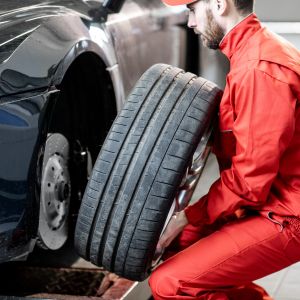
Advantages:
- Permanent solution: Replacing a tyre is the most effective and safest solution as it ensures the vehicle can be driven safely.
- Provides a new tyre: A replacement tyre will have a full tread and will be in good condition, providing better handling, stability and safety.
Disadvantages:
- Costly: Replacing a tyre can be expensive, especially if multiple tyres need to be replaced.
- Time-consuming: Tyre replacement requires more time than a patch or plug repair, as the tyre needs to be removed and replaced.
- Creates waste: Replacing a tyre creates waste and consumes natural resources.
It’s important to note that not all punctures can be repaired, and the location and size of the puncture will determine the best repair option. It’s also important to keep in mind that even with a repair, the tyre will have a reduced lifespan and will need to be replaced eventually.
Frequently Asked Questions
Q1. What are the different types of tyre puncture repair?
Ans: There are several different types of tyre puncture repair, including
- Patch repair
- Plug repair
- Tyre replacement
- Combination repair
Q2: Which type of puncture repair is best?
Ans: Each and every tyre puncture repair method has its own significance and is used for different conditions. If there are small punctures in the tread, use the patch method. If the puncture is in the side walls of the tyre, the plug method can be used. If the puncture is a bit serious and the tyre becomes irreparable, there is no other option bu to replace the tyre.
Q3. How many puncture repairs can a tyre have?
Ans: A tyre can have multiple punctures and can be repaired until it is in good condition. But as time passes and the condition of the tyre diminishes, it is better to get a tyre replacement instead of tyre repair.
Q4. What is a major tyre repair?
Ans: A major tyre repair involves cutting and patching a large section of the tyre or repairing a puncture that occurred in the side walls of the tyre These types of repairs are generally considered permanent and can affect the safety of the vehicle and its passengers, if not done properly.

